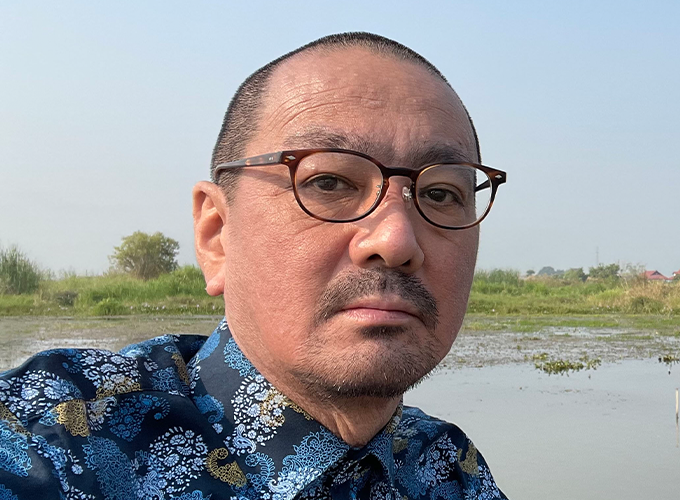Nobuhiro Ohnishi
Professor
- ohnishi.nobuhiro

- Areas of Research
- Animal Ecology, Wildlife Conservation, Community-Based Conservation
- Profile
- Research
-
Dr. Nobuhiro Ohnishi obtained his Doctor of Science from Osaka City University and is a member of the Japanese Society for Tropical Agriculture (JSTA).
Dr. Ohnishi’s recent research focuses on the wildlife of our surroundings. There are many possible ways to coexist with wildlife. For example, reserved areas are one of the common systems for conservation solutions. Wildlife dwells everywhere in our surroundings, such as farming fields and settlements. To live together with wildlife in our daily life, we must develop a system for coexistence.
Paddy fisheries and management of its surrounding areas are widely conducted in Asian countries. These irrigated lands were listed as vital habitats at the Ramsar Convention. Satoyama, Satokawa, and Satoumi environments are also considered as important places for biodiversity. Dr. Ohnishi is facing the challenge of studying the ecological features of paddy ecosystems where unique fauna occurs for future development of community-based conservation .
-
Paddy fisheries are a very widely spread practice in Asian countries. However, rice production is the most important aspect of rice paddies. Paddy fisheries are not well-considered for their future sustainability. As opposed to fish culture requiring food resources for the growth of inhabitants, paddy fish are members of a unique fauna in the paddy since they can naturally develop when in the proper environment. With the paddy environment being strongly controlled by farmers, community-based management will be one suitable method for fish resource management. We can find opportunities to start fish resource management with fishermen and farmers.
Dr. Ohnishi recently encountered otters in Myanmar. The otters are living in the mangrove area, a fishing area for local villagers. Those who frequent the mangrove are aware of the otters’ existence, but most of the villagers consider otters as an extinct species. Field studies reveal that the otters are able to survive even if the villagers considered them extinct. Mind shift of residents and researchers is important to conducting the conservation action, which suggests that community-based conservation will be also suitable for the otters.